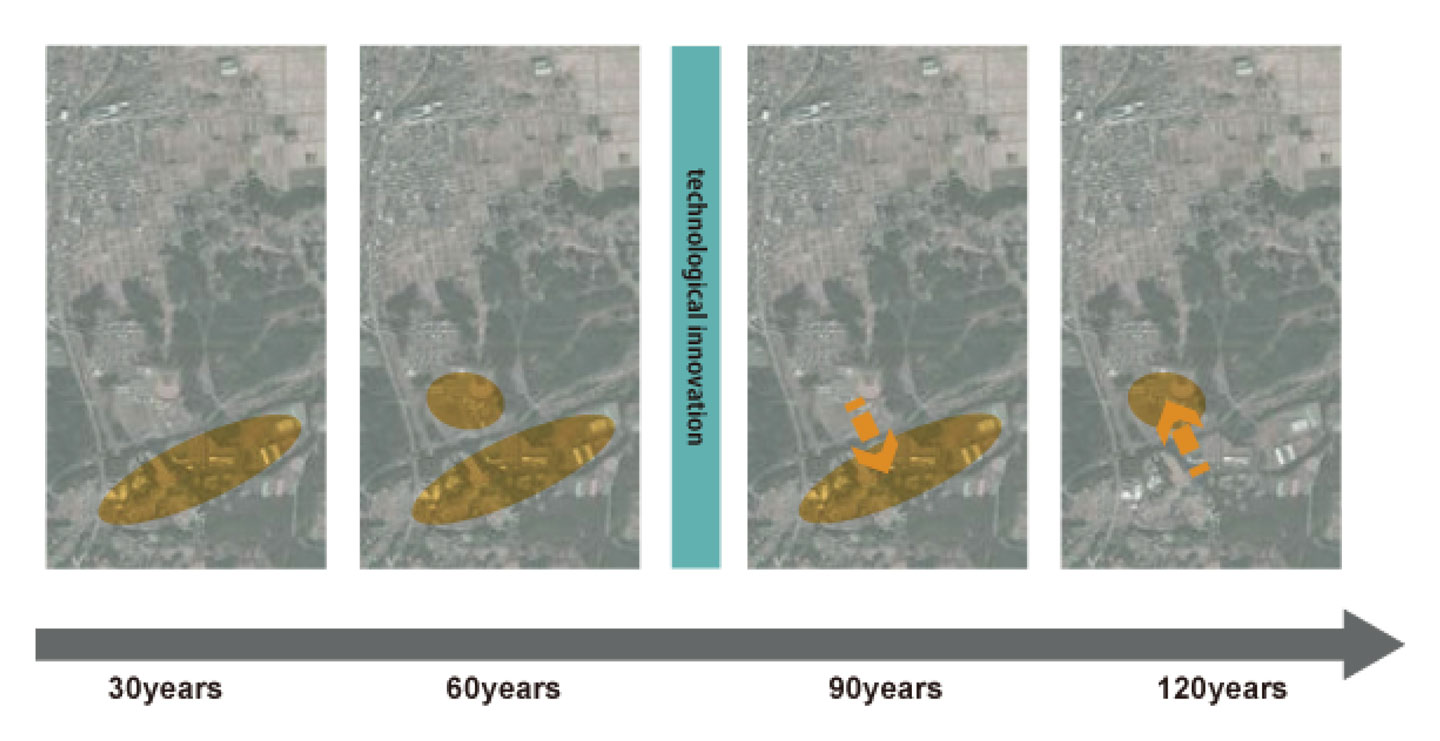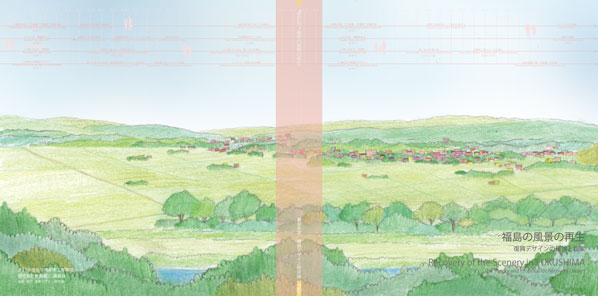2013年度冬学期 都市設計特論第三(都市工学)/ 設計製図第二(建築学)
福島の風景再生計画
はじめに
原発が爆発したところとして、抽象的にしか理解されなくなってしまったフクシマは、実態のある福島、もしくは双葉郡という地域 です。あるいは南相馬、浪江、双葉、大熊、富岡、楢葉、広野、いわき、という個別の自治体の集合体であり、人々が暮らしてきた文化や歴史を蓄積した土地として捉える必要があります。それが、再生への不可欠な一歩です。
津波だけでなく未だに放射能汚染が続いているという現状、それがこれからも残っていくという未来、そもそも原発を受け入れる決断を過去にしなければならなかった地域の問題、愛する人や故郷の喪失を抱えながら、これらに立ち向かっている被災という状況を可能な限り想像しなければなりません。
福島で起こっていることの俯瞰的把握をふまえて、論点を整理し、再生する風景の具体像を構想しながら、さらにそこへの道程も示してみる、という姿勢を保ち続けなければなりません。
デザインスタジオについて
2013年度冬学期の本演習は、大きく二つのフェイズで行いました。
第一フェイズでは、これまであまりにも欠けていた、除染や放射能汚染等の分野における知識を補うために、大量の資料を読み、講師の方々にショートレクチャーをしていただきました。また復興についての考えの掘り下げや福島という地域の理解も進めました。
第二フェイズでは、広域計画と、三次元的な風景が重要な界隈という、二つの空間スケールで進めることを意図していました。
次第に、汚染の解消という時間軸の重要性が共有され、それを少なくとも帰還困難区域と避難指示解除準備区域においてそれぞれ検討し、この地での資源を活かした生業や新たな生活の風景を提示することになりました。また、人の一生という時間への注目や広域ガバナンスの構築を生むための建築へもチャレンジしました。
福島の風景の再生
Recovery of the Scenery in FUKUSHIMA
原発事故を経験した福島における復興計画の提案を目標としたプロジェクトである.福島には,人口減少に代表されるような被災前からの潜在的な課題があり,2011年の被災によりさらに深刻化したといえる.今回,原発の所在地である双葉市を囲む双葉郡に焦点をあて,震災当時に高校生だった世代の故郷への帰還を構想することとした.高校生を対象とした理由としては,”ふるさと”という言葉には,”幼少期や青年期を過ごした場所”,”同窓会をひらく場所”といったイメージがあると仮定したためである.
本提案は以下の構成となっている.まず第一に双葉群役場の提案,そして第二に帰還準備区域である楢葉町の復興計画,そして第三に,最も汚染が深刻であるとされる双葉町の復興計画である.これらの復興過程を経て,被災当時の高校生に対し,故郷へ還るタイミングの選択肢を与えることを目標としている.プロジェクトの中で,常にタイムラインを念頭におき,短期的計画から長期的計画まで柔軟に包括できるよう努力した.
fig.1が本提案全体のタイムラインであり,概要である.
Fukushima became widely known as a place of one of the worst nuclear accidents. Here we propose the recovery process of Fukushima. There are several potential difficulties such as declining population. And of course, the disaster caused severer situation. We focus on Futaba County, which includes nuclear plants, and start the discussion from the return of the high school students.
This proposal consists of 3 points. First, we propose “Futaba County Hall” to encourage the solidarity and collaboration between the municipalities. Second, we design the recovery of Naraha town where we can expect citizens to return earlier than other towns in Futaba County. And third, we propose the recovery of Futaba town, the most seriously damaged town with some new ideas such as “soil transfer ceremony”. With those recovery processes, the people who were high school students in the disaster can have several chances to return to their home town, to get a job, to get a family house, or to spend a retired life. Through all the discussions, we’d been always tried to keep the timeline in our mind, which is sometimes long, hundreds years, and sometimes short, decades, to get the flexible and appropriate ideas.
fig.1 is our timeline and at the same time is the outline of our project.
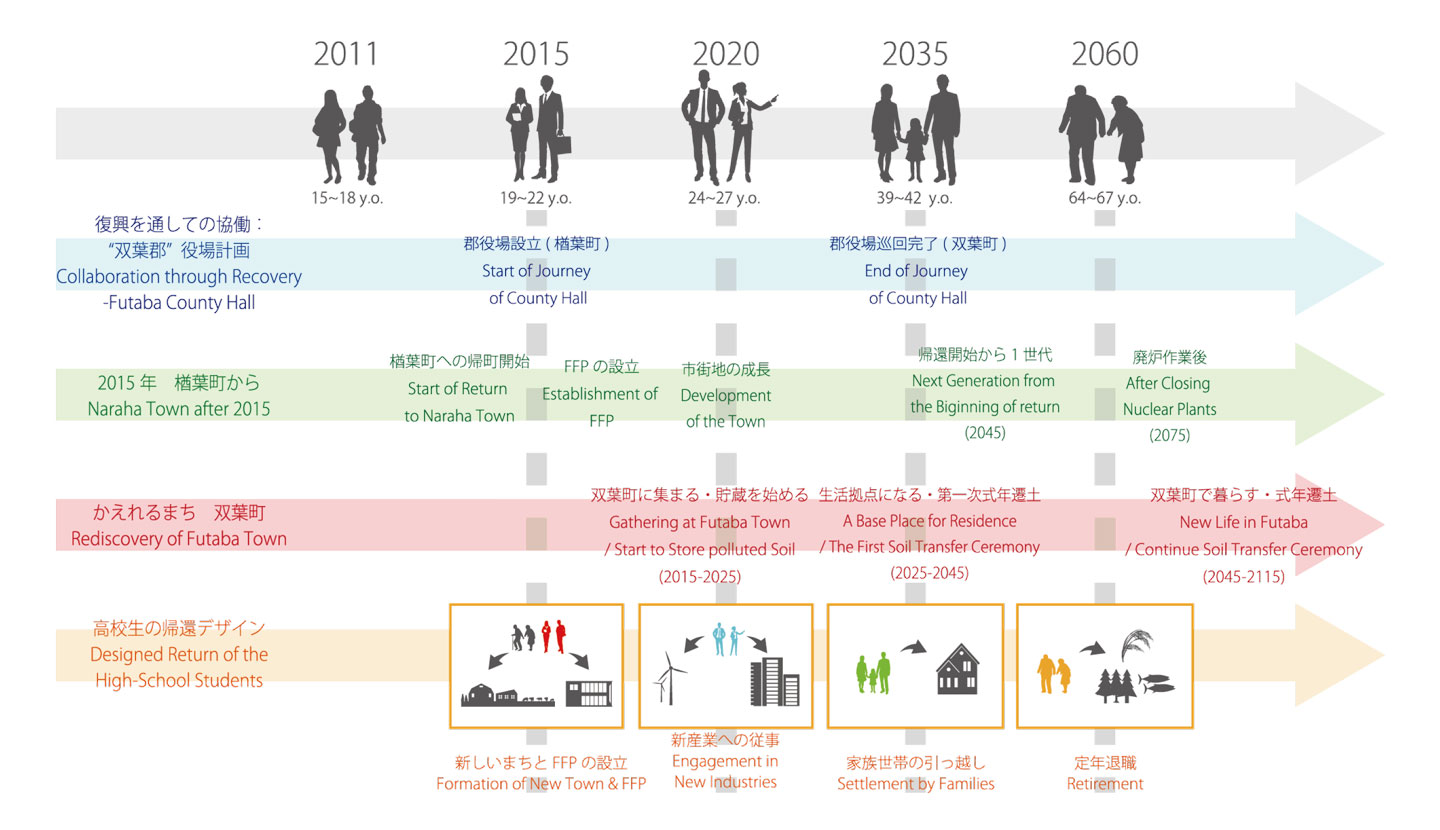
<双葉群役場の提案>
従前から縮退化にあった双葉郡において,従前の自治体を今後も機能させていくことは難しくなるだろう.しかし,複数自治体を一朝一夕に合併させることは難しい.そこで,現在”双葉郡”と呼ばれる6町2村の協働から始めることとする.本提案では,協働のスタート地点として,またシンボル的な役割を担うものとして,双葉群役場を計画する.群役場は,帰還準備区域である楢葉町に建設され,約2年半ごとに各町村を巡り,最後に双葉町に到着,そこに本設とする.つまり,除染が完了し帰還を開始できる場所から順に群役場が現れることとなり,群役場の軌跡はそのまま双葉郡再生の軌跡でもある.
群役場は会議室などの一般的な用途のほか,託児所や図書館など,それぞれの自治体で必要とされる施設を試験的に実装できるスペースを備える.金物を使わず,何度でも解体と再建を繰り返すことのできる構法を採用し,この地域の農地のグリッドに合わせた平面を採用することでどの町村でも建設できるよう設計する(fig2).
This project questions the independence of municipalities of Futaba area in the near future. It is well known that contemporary Japan is in a demographic shrinking process. Unfortunately, the disaster of 2011 does not benefit Futaba County in general shrinking process. Depopulation causes reduction of the taxpayer. The reduction of the taxpayer brings financial independence of municipalities and their public services in danger. Such a reduction of the taxpayers would result into an amalgamation of municipalities. The advantages of amalgamation are: more efficient financing and usage of public services; and more efficient city management. However, there are a few disadvantages, such as, loss of autonomy and struggle to understand each other needs.Proposed process does not stop amalgamation, but rather creates a smooth transition to reduce the disadvantages of it . Creation of the common recovery process creates united Futaba ounty Community and encourages municipal politicians to be solidary and collaborate with each other. We believe that those goals could be reached by one building. A building that we call Futaba County Hall(fig2).
County hall travels around eight municipalities, hypothetically in 20 years or 240 months, which is approximately one generation. This cycle follows partly projected and partly assumed reopening of the area. The journey will show the importance of each community and the necessity to share and collaborate with each other. The building stays 30 months, which is 2.5 years, in one place: 3 months for the site preparation and building assembling, further, 21 months usage of the building, finally, 2 months disassembling of the building and site tidy up. After the cycle, the building will stay at its final place in Futaba as a symbol.
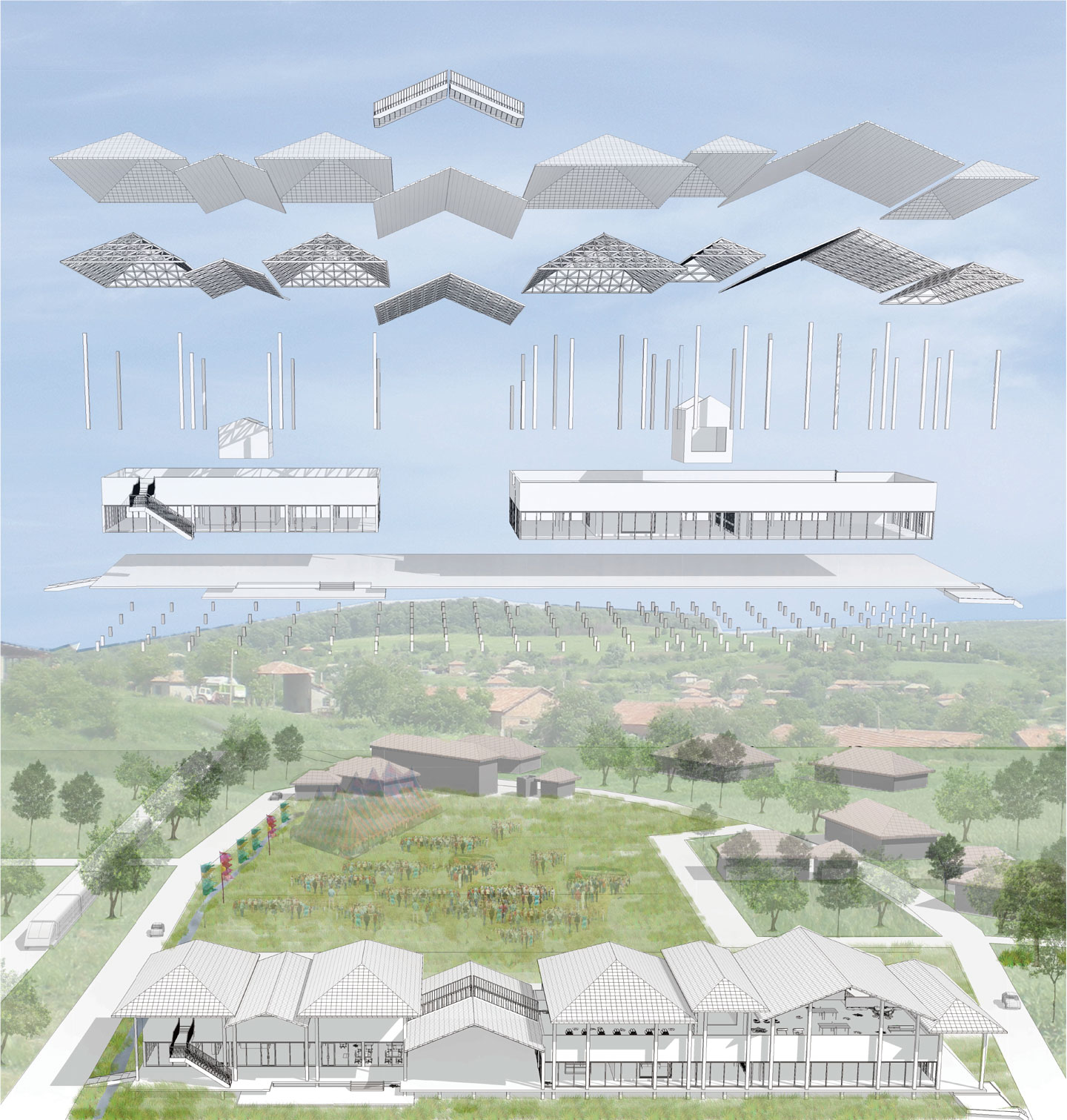
<楢葉町復興計画>
楢葉町民の4割が居住していた竜田駅周辺における復興プランを考える。除染計画が2014年度末に終わった場合の2015年4月からの帰還計画である.本提案では,双葉郡の復興を指揮する団体,双葉復興パートナーズ(FFP)を提案(fig3)し,楢葉町にはその第一拠点と活動従事者等の追加居住民を対象とした集合住宅を計画する.
Recovery of Naraha-townWe propose the recovery plan around Tatsuta Station where 40 % of Naraha citizens were living. After decontamination, we start this plan from April 2015.Here, we propose “Futaba Fukko (meaning recovery) Partners” (fig3) and residence for new citizens.
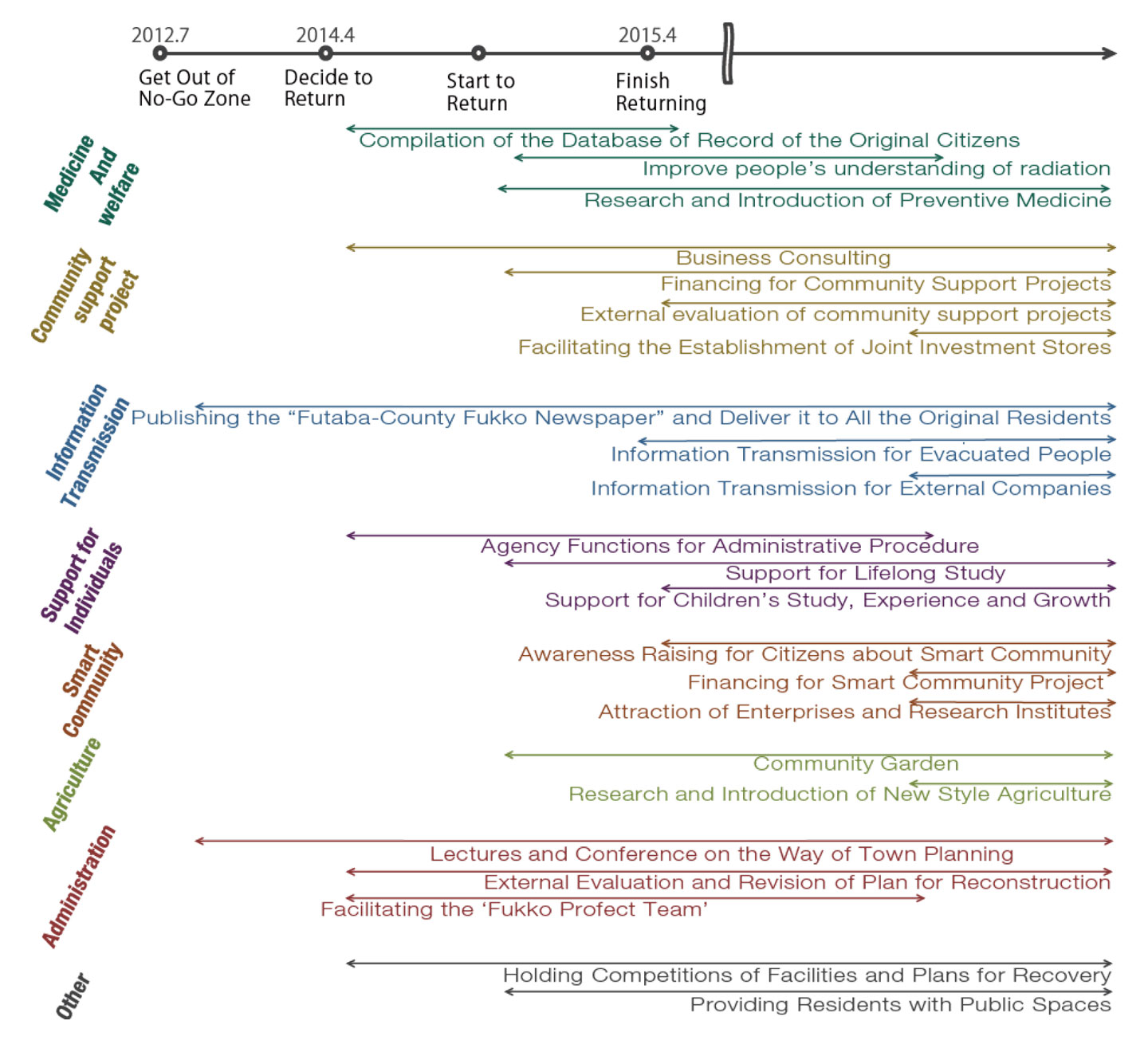
<双葉町の復興計画>
放射能汚染が深刻であるとされる双葉町において,元の住人がふるさとと関わり合う方法を模索する.現在,双葉町民がいつ帰還できるのかは明らかになっていないが,完全な帰還の前に定期的に里帰りができるよう,その頻度や許容できる放射線量別に複数の選択肢を用意する.また,除染により生じた汚染土の処理場を双葉町と仮定し,汚染土を30年に一度移動させ貯蔵スペースを小さくするとともにそのプロセスを”式年遷土”として象徴的な式典とすることも提案する(fig4).
Recovery of Futaba-townWe propose the way to connect citizens with highly polluted hometown in the future. Today we can't know when citizens of Futaba town can return to their hometown due to the high radiation dose. However, we think they should have various ways to keep in touch with Futaba town. So, we make some patterns of returning plans in accordance with their lives and risks of radioactivity. On the other hand, Futaba town has a nuclear plant and will host temporary soil storage. We would like to give an honor as the most important memorial place to Futaba town. For that aim, we propose " soil transfer ceremony “(fig4).
